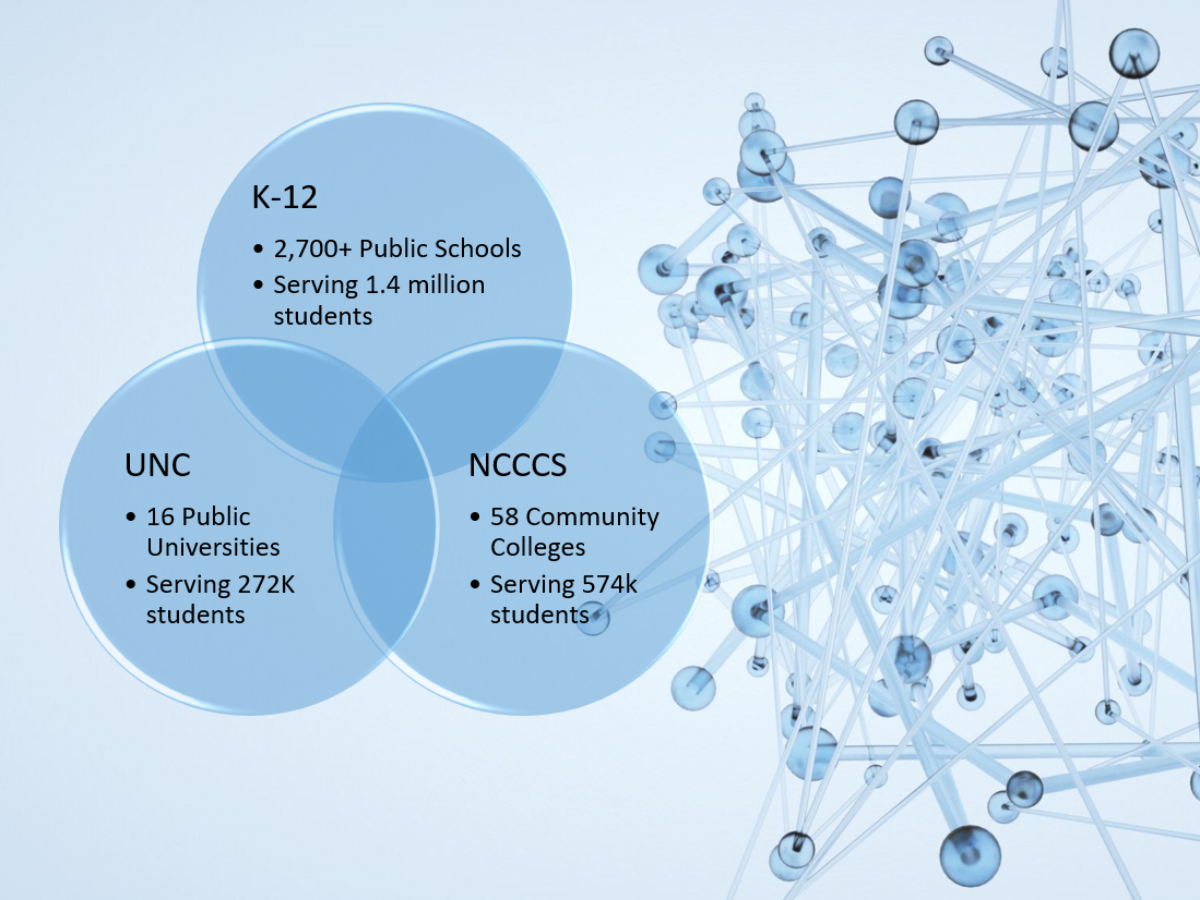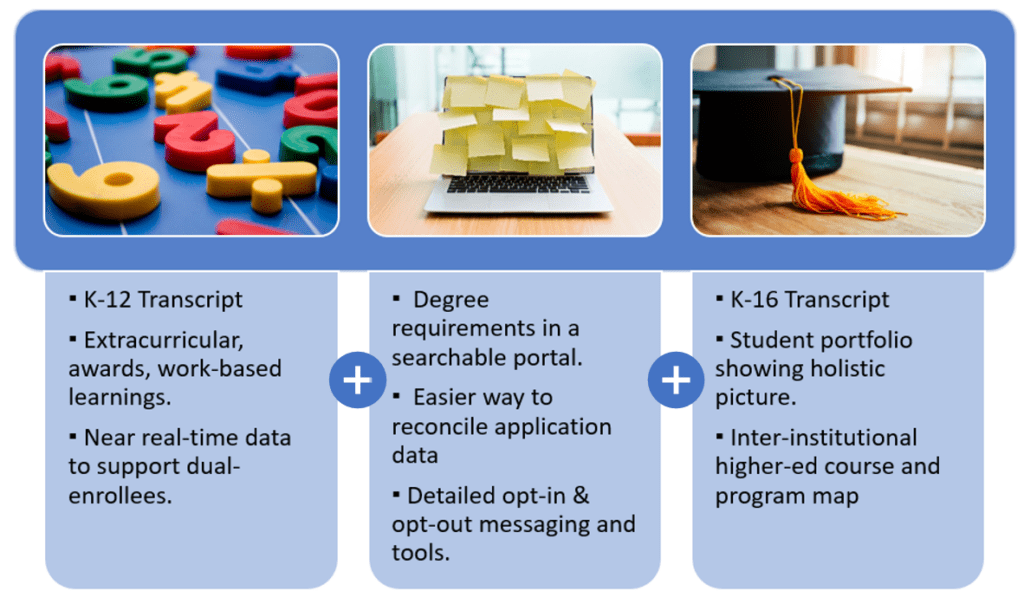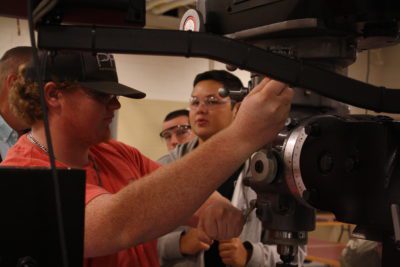

|
|
North Carolina is data-rich, but student data systems are disconnected, posing challenges to students and families as they navigate their education journey. Disjointed information also makes it difficult for school administrators to serve, advise, and help students find education pathways that lead to postsecondary success. How can students, families, and staff be empowered with access to interoperable student data? Let’s look at three key transition points in the journey of a student where seamless, easily navigated, and interconnected student data systems would be beneficial, and could prevent students from exiting the pipeline to postsecondary education.


Participate in dual enrollment programs
In 2020-2021, about 60,000 North Carolina public high school students enrolled in college courses while in high school. Thanks to North Carolina’s Career & College Promise (CCP) program, eligible students can participate in college-level coursework at colleges and universities while still enrolled in high school. However, did you know these students, families, and those who serve them have to navigate two distinct student data systems that lack interoperability? Students in the CCP program are being supported by both their high school and college. Yet these two groups lack real-time access to information such as attendance and performance. While data is shared at the middle or end of the term, parties would benefit from more bidirectional data to develop student, instructor, and course schedules that facilitate participation in the program. If advisors can see student performance and attendance in near real-time, they are better positioned to provide needed support to students who may be struggling.
Apply and enroll in postsecondary programs
In 2021, 75% of North Carolina high schoolers intended to enroll in a postsecondary institution, but only 55% of graduates enrolled within 12 months of graduating high school. Applying to postsecondary institutions is an intimidating process for many students and families. Disconnected student data systems make it even more challenging. While a wealth of information is available to students and their families via the College Foundation of North Carolina’s Planning Tools, it is not always personalized or easily used. Students and families have expressed the desire for a more specific and personal view of the degree “roadmap” with steps to take to move forward in their educational journeys. College administrators also indicated there are currently challenges in matching student-level data between transcripts and applications and that the process is labor intensive. Better adoption of North Carolina’s Unique Student ID system could ease this burden and would ensure students’ data elements are accurately matched.
Transfer between programs
In the fall of 2021, approximately 17,000 students transferred to the UNC System institutions from community colleges, private colleges, out-of-state programs, or other UNC institutions. The transfer process is far from seamless and can be difficult to handle. It is unfortunately common for students to lose credits as a result of transferring from one institution to another, and students not knowing which course or new institution is best aligned with their sought-after degree. A digital, unified transcript and inter-institutional higher education course mapping can help make the transfer between postsecondary institutions easier to navigate. This coupled with the mapping of inter-institutional courses can help ensure credits are not lost and students are placed in the appropriate course to complete their degree requirements.


The path to interoperability
North Carolina is well-positioned to transform into a state with interoperable K-16+ student data systems. The data ecosystem currently in use in K-12 is capable and ready to incorporate additional connections to other systems and has processes in place for sending files to other institutions. While current postsecondary data systems are not as centralized as K–12 and rely more on local data sources, there is a wealth of valuable information within each individual sector that has the potential for interoperability. The postsecondary system offices already have connections with each individual school for collecting data. If these connections are enhanced, the communication between institutions would be improved and simplify a possible future state solution.
A report submitted to the General Assembly by myFutureNC outlines the requirements necessary for the state of North Carolina to create interconnected and interoperable real-time student data systems to facilitate communication, collection, and transition of student data between public schools, community colleges, and universities and to provide students access to their data, including after the student leaves the institution. The study provides a path for North Carolina to be a national leader through the development and implementation of interoperable student data systems, and it can be transformative for the state’s students, families, and staff.
You can find an Executive Summary of the report and the full report on the website of North Carolina’s Joint Legislative Education Oversight Committee.





